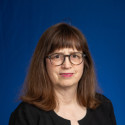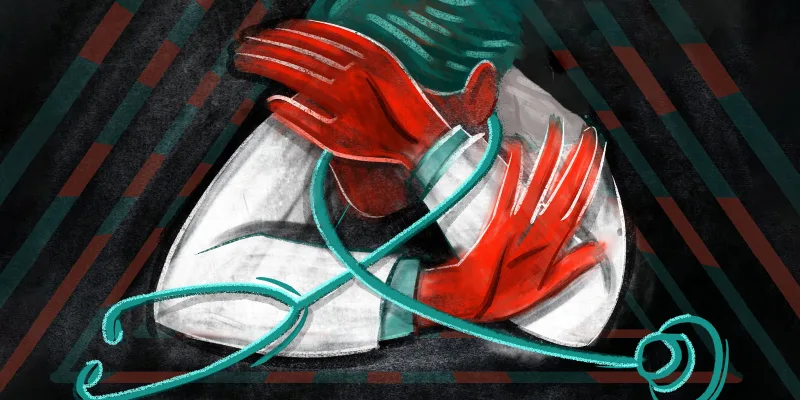Think about the mentors you have had throughout your career. They helped and guided you to where you are today. My special mentor was John R. G. Gosling, MD, a captivating advisor, coach, teacher, and tutor. On Saturday nights in the mid-1980s, fellow obstetrics and gynecology residents and I would spend three hours viewing colorful gynecologic pathology images as he embellished them with stories about his patients. These anecdotes were interspersed with countless tales of British history, his beloved pastime. Each patient case, whose images were stored on dusty old Kodachromes, would start with a brief clinical summary, followed by photos of the gross and histologic findings. He waited with unending patience for one of us to provide a diagnosis.
Over the years, Dr. Gosling occasionally repeated a patient scenario that I proudly remembered. One was a 45-year-old woman with presumed uterine fibroids. On gross imaging, her uterus was approximately the size of a 20-week gestation. Then came the histology. I leaned toward the screen to examine the spindle cells closely.
Were those purple-black bars mitotic figures? Looking straight through Dr. Gosling’s black-rimmed glasses to his brilliant eyes, I hesitated and said, “Uterine leiomyosarcoma.”
“Why did you make that diagnosis?” he questioned calmly. For a minute I was silent. I vacillated, trying to find the correct words. “There is marked cytologic atypia, and there are many mitotic figures.”
“How many mitotic figures per 10 high-power fields define a uterine leiomyosarcoma?” he asked.
He had me at that question the first time, but by the second presentation of this diagnosis, I was ready. “Greater than 10 mitotic figures per 10 high-power fields,” I proudly answered.
He would then go into a lecture on cancer symptoms. “Unfortunately, for some, their cancers are silent. They don’t experience symptoms until the cancer is extensive. This is seen in a variety of tumors, in particular, ovarian and gastrointestinal cancers,” Dr. Gosling stated.
Dr. Gosling and I loved the study of gynecologic pathology. He often brought up that pathology was an art and a science. I had a personal interest in ovarian tumors, for as a child, I was diagnosed with an immature teratoma on my left ovary. Today, the treatment for this cancer is generally unilateral salpingo-oophorectomy with or without chemotherapy, depending on the stage and tumor grade. However, chemotherapy for malignant germ cell tumors was not routine until the 1970s. In 1968, at age 9, I underwent a total abdominal hysterectomy and bilateral salpingo-oophorectomy, along with an incidental appendectomy, followed by cobalt radiation.
Over 50 years ago, medical information was not as available to patients as it is today. Children were often kept in the dark for their “benefit.” I didn't realize it at the time, but this was the first of many instances of the "sound of silence" surrounding my diagnosis that I would receive.
No one mentioned cancer to me. I only was told that I had my appendix removed. As a trusting child, I never questioned the radiation I received following an appendectomy. My parents were waiting for the five-year survival mark to tell me about the ovarian cancer. Then, I would be cured and would never need to deal with cancer again.
Ironically, I remember the music that was played on the radio during my drive to the hospital for radiation treatment. “The Sound of Silence,” by Simon & Garfunkel, became the number one song in January 1966. It remained popular for years. I think about the words often. On those rides to radiation, the cancer was never mentioned. The diagnosis was concealed by the gynecologist and my parents.
“Fools" said I, "You do not know / Silence like a cancer grows.”
Life remained ordinary for almost five years after the radiation treatment ended, besides the usual preteen and early teenage dramas. I often questioned my mother about my absence of breasts and pubic hair compared to my friends, as well as the delay in my period starting. She always had a reason to change the subject and avoid the answer. Occasionally, I experienced intermittent bowel obstructions that ultimately squirmed their way back to normal, until the one that occurred three months short of my five-year survival date. I developed uncontrolled nausea and vomiting. I was extremely dehydrated when my parents drove me to the ER. It was there, in the ER, that the silence was broken. The intern pulled back the curtain surrounding my bed, and said, “So, you’ve had ovarian cancer and are now obstructed. You may have recurrent cancer.” My eyes widened. My mother immediately took over and yet again, changed the subject, attempting to distract me.
A laparotomy was performed, and the surgeon only found thick adhesions. When he told my parents that he found no cancer, my mother clapped her hands and my father cried. My first words when I awakened in the recovery area were, “What was that doctor talking about … ovarian cancer?” Throughout my recovery, my mother began the much-needed, belated discussion, continuing to defend her decision to maintain silence until the appointed “right time.”
I was 14 when I found out about my cancer and its resulting infertility. The social and emotional turmoil had its peaks and troughs throughout my adolescence and early adulthood. Estrogen hormone replacement therapy was started shortly after the surgery for the bowel obstruction. At that time, estrogen pills were utilized, as the estrogen patch was not available. It was important to keep in mind starting this at the optimal time, to prevent closure of the epiphyseal plate and the cessation of growth. After starting hormone replacement, my breasts enlarged and I physically resembled my friends; however, the fact that I was infertile continued to set me apart from them.
Time heals, and instead of staying angry or outraged over the apathetic chart recital from the intern and the years of benevolent deception, I went into medicine determined to become an obstetrician and gynecologist. As my interest in gynecologic pathology continued to grow, I obtained the slides from my ovarian tumor and, in my third year of the pathology meetings, took them with me to a “Gosling night.” He turned on his microscope and studied the slides without any words. After five minutes, he said, “This is an immature teratoma of the ovary, grade 4.”
I calmly replied, “But Dr. Gosling, there are only three grades of immature teratoma.”
He said, “They had not seen your tumor when they created the grading system. You are lucky to be alive.”
He was right, and while I felt fortunate to have survived this cancer, which was often lethal prior to the use of chemotherapy, I was bitter about the struggles I had encountered in my life from this disease. I would forever be different from my friends. Adoption was my only option for children.
To top it off, there were other worries than fertility. I knew that someday I might develop cancer from the radiation, specifically a sarcoma. These cancers tend to occur, at most, 35 years from the time of radiation. When I reached the 50-year survival mark, I figured I was truly free. But was I? Once again, I lay on the hard metal of the CT scanner as my body was sucked through a narrow tube. “Hold your breath,” the tech recited. “Breathe.” What would they find? Another bowel obstruction? How long would I be away from work? The intravenous contrast slowly flowed into my veins. A warm sensation encompassed my pelvis, traversing its path to my bladder.
My mind wandered as I lay cold and alone in the room. I thought back to what brought me to the CT scanner. It was May 2018, when the symptoms and signs started on the day I was to leave for a trip to lecture in Beijing, China. Nausea prevailed as my abdomen gradually distended, similar to my previous bowel obstructions. I asked the gynecologist oncologist I partner with at my hospital to order abdominal films to rule out an obstruction. No obvious abnormalities were seen on the X-rays. “But,” she said, “when you get back, you need a CT scan.”
The lecture I gave in China ended at 4 p.m. That night, the nausea recurred, associated with stabbing abdominal pain. After returning home, I scheduled radiologic imaging for the following week. However, I began to feel better. My busy work schedule was overwhelming. There were patients to be seen, charts to be dictated, and lectures to be written. My clinics were filled. Surgeries were lined up. I moved the study out. Two days later, I developed severe vomiting and reluctantly presented to our hospital’s ED. The nurse was quick to administer intravenous fluids. The attending physician ordered a CT of the abdomen and pelvis. An hour after the intravenous hydration started, I felt so much better. I suggested to the attending physician that I may as well go home and not bother to wait for the radiologic imaging. That may be the one time I was happy that someone ignored my suggestions.
The CT scan showed an obstruction. It was more than adhesions this time. A soft tissue mass, with an ulcerated loop of the small bowel, blocked the mid-ileum. Surgery was scheduled for the next day. It took the surgeons three hours to lyse the adhesions from prior surgeries and radiation therapy. Forty centimeters of small bowel were removed. The initial pathology reading was a gastrointestinal stromal tumor. The team was optimistic. However, the final report described a five-centimeter, grade-three leiomyosarcoma, likely secondary to the previous radiation therapy. With a nasogastric tube in place and a slow return of bowel function, I was angry. Then furious. Then depressed and ready to give up. “Why me? Why me, once again?” constantly ran through my mind. It wasn’t fair.
The oncologist entered my room to meet me and discuss the pathology report. She said, “You have an angry tumor.”
My thoughts immediately returned to Dr. Gosling’s slides of uterine leiomyosarcomas. I asked, “How many mitoses per 10 high-power fields?” She initially seemed a bit perplexed but responded in a composed manner. “Over 20, and there is necrosis, as well as significant nuclear atypia, consistent with a small bowel leiomyosarcoma.”
Silence prevailed. I closed my eyes and cried. The silence broke as my friends and family in the room took over the discussion with the oncologist. My mind drifted back to the cold wintery nights at Dr. Gosling’s house and the unfortunate women with leiomyosarcomas. Now I was one of them.
I recently crossed the 5-year sarcoma survival milestone, one I never thought I would make. I continue to reflect on both my malignancies and the silence around cancer.
When I first found out I had ovarian cancer, there was little time to discuss it, as I urgently needed to be stabilized and undergo surgery for the bowel obstruction. I was too young to fully understand what was happening and what it meant. My parents’ silence echoed the prevailing attitudes of the medical establishment and child-rearing books of those times. At times I am disappointed that my parents conspired with the doctors to deceive me.
I have pondered that first cancer diagnosis frequently throughout the years, particularly in the reproductive years, as my friends were starting their families. However, medicine was at a much different place than today in communicating with patients. While physician-patient communication between the 1960s and now has advanced significantly, the need for improvement continues. I have lectured on communication across the spectrum, to those who have entered the field in the era of patient-centered communication of recent years, and to those senior in practice, who may have learned to withhold some communication. Yet, at times, the sound of silence continues in clinicians, patients, and parents. Some parents find it too painful to share a diagnosis with their child. Similarly, a child might be too scared to ask about cancer. And clinicians affected by time demands or other reasons may omit medical information, oblivious to the fact that some of their patients may deeply want or need to know their tumors’ mitotic count to make sense of their diagnosis and treatment.
I discuss optimizing patient care in difficult situations with honest, informative, heartfelt messages. During these lectures, I think back to the lyrics in that famous Simon & Garfunkel song.
"Hear my words that I might teach you. Take my arms that I might reach you.”
I am writing this today to encourage you to continue to explore and understand the needs of all affected by these devastating conditions. I was fortunate to have signs and symptoms that drew attention to my cancer diagnoses. I am privileged to be in a discipline (obstetrics and gynecology) that opened the doors to child adoption. My connection with reproductive endocrinologists has optimized hormone replacement and minimized bone loss from a lifetime of lower-than-normal estrogen levels. I have spent hours looking at histologic slides of the germ cell tumors and studying these patients’ outcomes.
Dr. Gosling was correct. I am lucky. Not everyone is so blessed. While the silence around me was not right, I have worked through the lack of conversation in many ways. I have forgiven my parents for delaying the discussion of my childhood cancer diagnosis. I am optimistic that communication between physicians and patients will continue to improve, as we as a community explore the needs of this population.
I encourage all of you to disturb the sound of silence.
Dr. Hope Haefner is the Harold A. Furlong Professor of Women’s Health at the University of Michigan and Co-Director of the Childhood Ovarian Cancer Association, a resource for health providers, patients, and their families.
Previously published in Patient Experience Journal.
Image collage by Jorm Sangsorn / Getty Images







